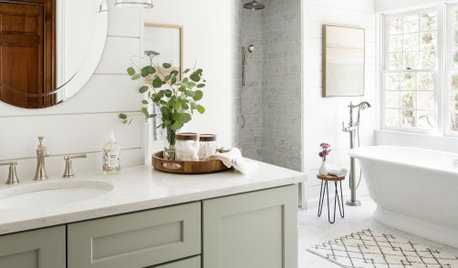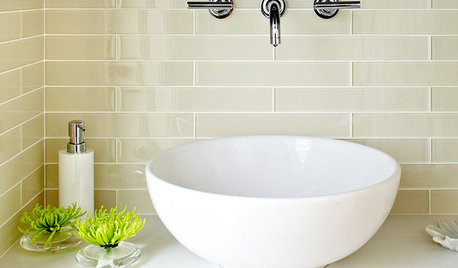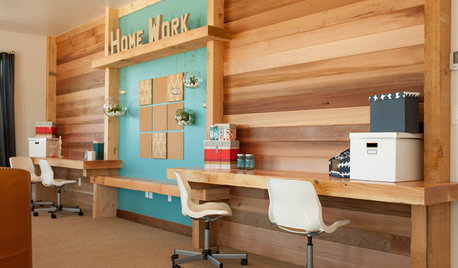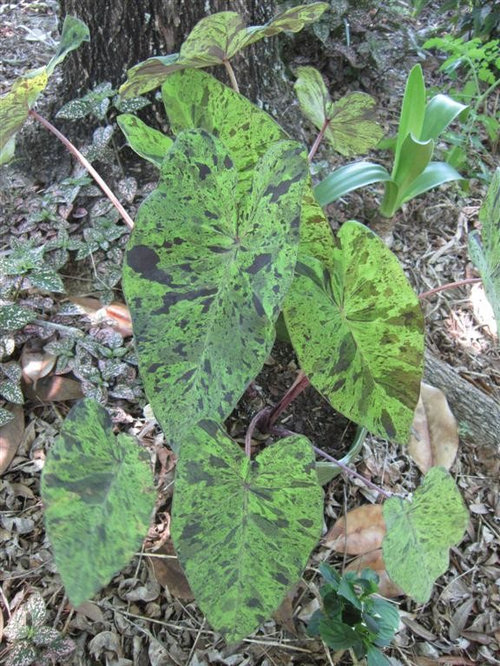Tips, tricks and lessons you have learned
Featured Answer
Sort by:Oldest
Comments (31)
greenie1_gw
9 years agolast modified: 9 years agoritaweeda
9 years agolast modified: 9 years agoRelated Discussions
Newbie - Lessons learned this year!!! What have you learned?
Comments (27)Stage Rat, thanks so much. I googled it and that is what it is. I will go right out and dig it up. I don't want those in my flower beds. I wish all my flowers looked that healthy though. I forgot to mention lesons learned about which containers worked best for me. My favorite is the round containers that I get cakes or cookies in (also an excuse to buy them). I make newspaper pots, and they are so much easier to plant out than to try and get the babies out of a milk bottle or 2L bottle. I think the newspaper helps the soil also. I tear off the top as I am dropping them in the hole so that they don't wick away the water. All of mine that were planted that way are doing the best. Also, I put a small water bottle in the center and use plastic shower caps (16 for $1) from the dollar store on top of them--it works great. The second favorite is the 1/2 size stem table aluminum pans from Sam's. The shower cap fits on them also with a small water botter to hold it off the babies. I think I will learn many more lessons from the responses to this thread. Thanks again for helping me ID the plant. Also thanks to everyone who shared their lessons learned. It is a great help. Jeane...See MoreRain Barrels & garden tips & lessons learned?
Comments (19)For a reddish rain barrel on Amazon, see link below. One of the reviewer described well on how to use a rain-barrel: http://www.amazon.com/Upcycle-Gallon-Terra-Cotta-Rain-Barrel/dp/B005U6EU1Y "Kenneth L. Willitts says: It has three outlets, two of them one at the top and the other at the bottom are for hose connection. The other outlet is at the bottom and is fitted with a spigot, which can be shut or open and also has the ability to be connected to a hose. I keep the very top outlet connected to a soaker hose that goes into my garden, so if there is an overflow, it will go into the garden. I have three of theses and they are very easy to connect to any gutter system. The other important thing to consider and it is a good and bad problem, it has a nice screen on the top to keep dirty and trash out of the tank, but if you have heavy foliage the trash can block the screen, so about one a month, I just brush off the top and that solve that problem. Hope this helps. PS by the way if you were to connect two or more, use the top outlet connected with a standard hose with two female adapters, if you need help let me know. Ken" See below link for a reddish rain-barrel different from Amazon, it's 50 gallon Terra Cotta Snap Lid Rain Barrel, sold for $79.95, free shipping. Here is a link that might be useful: 50 gallon Terra Cotta Snap Lid Rain Barrel This post was edited by Strawberryhill on Mon, Jun 2, 14 at 11:28...See Morebacksplash planning tips: what have you learned?
Comments (4)Math is important! It takes math to figure out how many square feet you have, how many cuts you will need to do, and how to create decorative focal points that work with your field body tile. The math portion is actually harder in many ways than the physical install of the tile. But figuring out a good layout is what separates a nice backsplash from a great backsplash. Even if you're "just" doing a simple field tile install with no elements, you still need to figure out how best to place those tiles for minimal cutting and maximum impact. A corollary to the math is the cheat sheet to the math. :) Cut out paper representations of your tile size and arrange them by trial and error on your backsplash until you get the layout figured out. If you do this with colored paper close to your tile color, it will really help those who need visualization before they can commit. Another tip for a successful installation is to take a long level and lay it across the area to be tiled. Mark any low or high spots on the wall. See exactly how straight the wall is before you begin to tile shop. If you have a very wavy wall, small tile will be more suited to install here if you're not looking to correct the wall's waves. If you are dead set on using 18"x24" glass tiles, then you at least have a road map of where you'll need to add wall compound before you start. Use the powdered stuff that you mix up and that sets by chemical reaction, not the "mud" in a bucket that most box stores will try to sell you. If you have a large amount of depth that needs to be filled, do it in multiple coats with some fiberglass mesh tape to help it all hold together properly. Don't forget that you will most likely need box extenders for your electrical outlets on your backsplash. And cut your tile carefully around those holes. The screw holes for the outlets need to have some breathing room or the face plates won't sit correctly. If you get the paintable face plate covers, you can use a color copier to copy your tile and then decoupage it onto the face plates, making the outlet virtually invisible. And it's worth it for the wait and the hassle to special order the outlets themselves in a color that will blend in well with your backsplash. There's nothing more jarring than having ivory electrical outlets showing in a green marble backsplash. It's even more jarring if you take the time to match the cover plate. It's like two eyes, glowering at you!...See MoreI have learned my lesson!
Comments (70)I know this is an old thread but it makes me grin. Rosie, are you still able to keep numbers down? I was around here when you were just getting back into av plants, (remember shihtzu4su?) and I do believe we did a trade or two and you sent me some kcups! I went thru the same thing you did... I was expecting my third child in 2015, and - get this - even LOOKING at a violet gave me an attack of morning sickness! At that point I had six shelves full of African violets and babies, and I couldn't handle taking care of them. So I started pitching.. And giving away, and narrowed it down to three shelves and one narrow window sill for minis. That winter I started pitching even some of my mature plants because they looked so awful, and I was paranoid about non-existent bugs. I was down to maybe 10 standards and 10 minis! After my child was born, I still wasn't interested in violets much anymore, tho the poor things did finally get repotted and watered! This spring I finally started caring for them again. Put them on wicks, groomed them regular, and actually fertilized them! They are rewarding me with bowers of flowers! I have a total of around 60 av plants now... (That's 40 plants and 20 diff varieties with leaves down) Most are minis, because they seem to suit me better. :) I understand the throwing out stuff now too... Whew. Was hard on me then but I do it callously now! :D Anyhow thanks for the chuckles. the way this thread switched directions half way thru had me laughing....See MoreMichael AKA Leekle2ManE
9 years agolast modified: 9 years agogaryfla_gw
9 years agolast modified: 9 years agothonotorose
9 years agolast modified: 9 years agojane__ny
9 years agolast modified: 9 years agoritaweeda
9 years agolast modified: 9 years agoCarol love_the_yard (Zone 9A Jacksonville, FL)
9 years agolast modified: 9 years agothonotorose
9 years agolast modified: 9 years agowhgille
9 years agolast modified: 9 years agotomncath
9 years agolast modified: 9 years agogaryfla_gw
9 years agolast modified: 9 years agosultry_jasmine_nights (Florida-9a-ish)
8 years agowhgille
8 years agodirtygardener73
8 years agodirtygardener73
8 years agoapapjim
8 years agoMichael AKA Leekle2ManE
8 years agojane__ny
8 years agofilly_z8bFL
8 years agosultry_jasmine_nights (Florida-9a-ish)
8 years agolast modified: 8 years agoirma_stpete_10a
8 years agodirtygardener73
8 years agoSweetMonkeyCheese Z9 Tampa
7 years agodirtygardener73
7 years agoGlenn Jones(9b)
7 years ago
Related Stories

CONTRACTOR TIPS6 Lessons Learned From a Master Suite Remodel
One project yields some universal truths about the remodeling process
Full Story
DECORATING GUIDESInterview: Lessons of a Home Photo Stylist
Annette Joseph shares her tips for styling beautiful home photography and finding the soul of a room
Full Story
REMODELING GUIDES6 Must-Know Lessons From a Serial Renovator
Get your remodel right the first time, with this insight from an architect who's been there too many times to count
Full Story
FUN HOUZZEverything I Need to Know About Decorating I Learned from Downton Abbey
Mind your manors with these 10 decorating tips from the PBS series, returning on January 5
Full Story
CLEANINGEco-Friendly Tips and Tricks for Cleaning Your Home
Are you wary of using chemicals to clean? These simple products and tricks will keep your home spotless naturally
Full Story
SELLING YOUR HOUSEA Moving Diary: Lessons From Selling My Home
After 79 days of home cleaning, staging and — at last — selling, a mom comes away with a top must-do for her next abode
Full Story
BATHROOM DESIGN14 Design Tips to Know Before Remodeling Your Bathroom
Learn a few tried and true design tricks to prevent headaches during your next bathroom project
Full Story
REMODELING GUIDESFinishing Touches: Pro Tricks for Installing Fixtures in Your Tile
Cracked tile, broken drill bits and sloppy-looking fixture installations? Not when you follow these pro tips
Full Story
HOLIDAYS11 Survival Lessons From Thanksgiving
With 10 people in 1 house for 3 days, you learn fast. Find out the good, the challenging and the just plain kooky
Full Story
KIDS’ SPACES5 Ideas for a Great Home Learning Zone
Get your child off to a good start this school year with homework areas and strategies that reduce the frenzy
Full Story






thonotorose